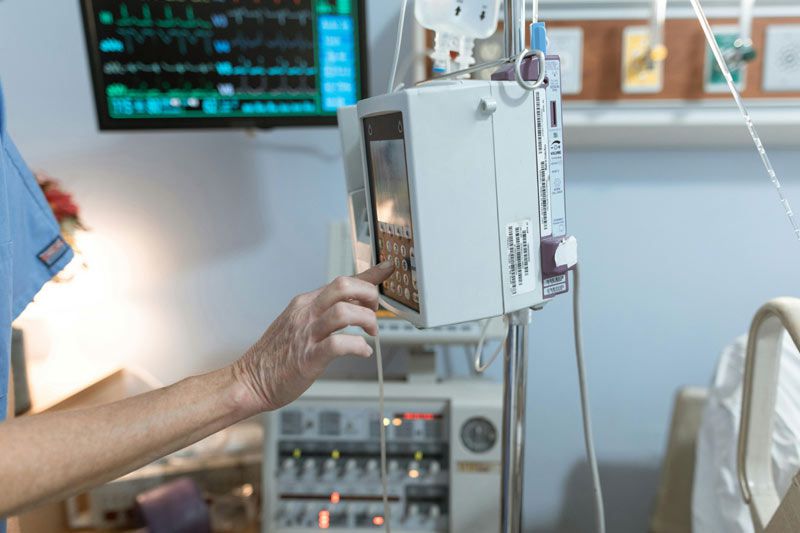Medical ketamine infusion therapy is a treatment option gaining recognition for its efficacy in managing various mental health conditions and chronic pain disorders. During a ketamine infusion session, a controlled dose of ketamine, administered intravenously, is delivered to the patient over some time under medical supervision. This guide aims to provide insights into medical ketamine infusions, including their uses, processes, potential benefits, and what patients can expect during and after treatment.
Understanding Ketamine Infusion Therapy
Ketamine is a dissociative anesthetic that has been used for decades in medical settings, primarily as an anesthetic and pain reliever. In recent years, research has shown that sub-anesthetic doses of ketamine can also have profound effects on mood regulation and pain management, particularly in individuals with treatment-resistant depression, anxiety disorders, post-traumatic stress disorder (PTSD), and certain chronic pain conditions. Ketamine works by modulating the activity of neurotransmitters such as glutamate and gamma-aminobutyric acid (GABA) in the brain, leading to rapid and sustained improvements in mood and pain perception. Medical ketamine infusion therapy involves the administration of ketamine in a carefully controlled and monitored environment to achieve therapeutic effects.
The Ketamine Infusion Process
Before undergoing ketamine infusion therapy, patients typically undergo a comprehensive evaluation to assess their suitability for treatment and establish baseline measures of their condition. During the infusion session, patients are comfortably seated or reclined in a treatment room while an intravenous (IV) line is established for medication administration. The ketamine infusion is then initiated at a predetermined dosage and infusion rate, with vital signs monitored regularly throughout the session. Infusion sessions typically last anywhere from 40 minutes to a few hours, depending on the protocol and patient response. After the infusion is complete, patients are monitored for a brief period before being discharged home with a responsible caregiver.
What to Expect During Ketamine Infusion?
During the ketamine infusion, patients can experience various sensations, including dissociation, changes in perception, and alterations in consciousness. Some individuals can feel disconnected from their surroundings or experience visual or auditory distortions, while others can have a sense of floating or weightlessness. These effects are typically transient and resolve shortly after the infusion is completed. Patients are encouraged to relax and allow the medication to take effect while remaining aware that they are in a safe and controlled environment. Medical staff are present throughout the infusion session to address any concerns and ensure patient comfort and safety.
Potential Benefits of Ketamine Infusion Therapy
Exploring the potential benefits of ketamine infusion therapy can provide insights into its role in mental health treatment. When administered under the supervision of a reputable health clinic, ketamine infusion therapy has shown promise in rapidly alleviating symptoms of depression, anxiety, and other mood disorders. By targeting neurotransmitter pathways in the brain, ketamine infusion therapy can offer relief for individuals who have not responded to traditional treatments. Additionally, ketamine infusion therapy is known for its rapid onset of action, with some individuals experiencing improvements in mood within hours of treatment. With proper monitoring and ongoing support from a clinic, ketamine infusion therapy can be a valuable option for individuals seeking alternative treatments for mental health conditions.
Post-Infusion Care and Follow-Up
After the ketamine infusion session, patients can experience residual effects such as drowsiness, dizziness, or mild disorientation, which typically resolve within a few hours. It is recommended that patients refrain from driving or operating heavy machinery for the remainder of the day and have a trusted individual accompany them home. Following the initial series of ketamine infusions, patients can undergo periodic maintenance infusions to sustain the therapeutic effects and prevent symptom recurrence. Close communication with the treating medical team is essential to monitor progress, adjust treatment as needed, and address any concerns or side effects that can arise.
Conclusion
Medical ketamine infusion therapy offers a promising treatment option for individuals struggling with treatment-resistant depression, anxiety, PTSD, and chronic pain disorders. By modulating neurotransmitter activity in the brain, ketamine can produce rapid and profound improvements in mood and pain perception. During the infusion process, patients can experience dissociative effects, which are typically transient and resolve shortly after the session. With careful monitoring and follow-up care, ketamine infusion therapy can help individuals find relief from debilitating symptoms and improve their quality of life.

Reblog It collaborates closely with clients to develop tailored guest posting strategies that align with their unique goals and target audiences. Their commitment to delivering high-quality, niche-specific content ensures that each guest post not only meets but exceeds the expectations of both clients and the hosting platforms. Connect with us on social media for the latest updates on guest posting trends, outreach strategies, and digital marketing tips. For any types of guest posting services, contact us on reblogit.webmail[at]gmail.com.
